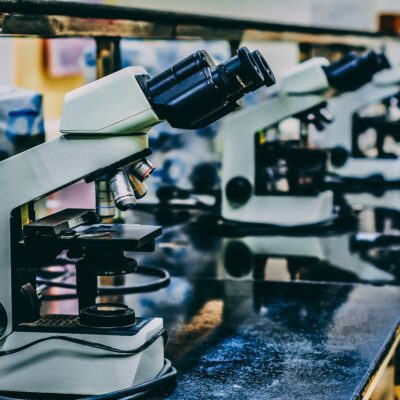Introduction to the intersection of technology and science
Welcome to the exciting world where science fiction becomes science fact! Technology is rapidly transforming the landscape of scientific discovery, pushing boundaries and unlocking new frontiers like never before. From decoding our DNA to soaring high with drones, join us on a journey through the intersection of technology and science as we explore how these innovations are shaping the future of research and exploration. Strap in for a thrilling ride into a realm where innovation knows no bounds!
The Role of DNA Sequencing in Advancing Genetic Research
DNA sequencing has revolutionized the field of genetic research by allowing scientists to uncover the intricate details of our genetic makeup. By decoding the sequence of nucleotides in DNA, researchers can identify potential disease-causing mutations and understand how genes contribute to various traits.
This technology has enabled breakthroughs in personalized medicine, where treatments are tailored to an individual’s unique genetic profile. Scientists can now pinpoint specific gene variations that influence drug responses, leading to more effective and targeted therapies.
Furthermore, DNA sequencing plays a crucial role in studying complex diseases like cancer, Alzheimer’s, and diabetes. By analyzing the entire genome, researchers can unravel the underlying mechanisms behind these conditions and develop potential interventions.
DNA sequencing continues to push the boundaries of genetic research, opening up new possibilities for understanding human health and disease on a molecular level.
Utilizing Artificial Intelligence for Data Analysis in Scientific Studies
Artificial Intelligence (AI) is revolutionizing the way scientific data is analyzed and interpreted. With its ability to process vast amounts of information quickly and efficiently, AI is transforming the landscape of research in various fields. By utilizing algorithms and machine learning techniques, scientists can uncover patterns and insights that may have otherwise gone unnoticed.
In genetic research, AI has been instrumental in deciphering complex genomic sequences, leading to breakthroughs in understanding hereditary diseases and developing personalized medicine. The power of AI lies in its capacity to sift through massive datasets with precision, accelerating the pace of discovery.
In environmental science, AI algorithms are being used to analyze satellite imagery for monitoring deforestation trends, tracking wildlife populations, and assessing climate change impacts. This technology enables researchers to gather real-time data on a global scale like never before.
As we continue to harness the potential of Artificial Intelligence in scientific studies, we open up new possibilities for innovation and exploration. The marriage of cutting-edge technology with traditional scientific methods paves the way for groundbreaking discoveries that have the potential to shape our future profoundly.
Drones: Revolutionizing Field Research and Data Collection
Drones are not just buzzing machines in the sky; they are revolutionizing how scientists conduct field research and collect data. With their ability to reach remote or hazardous areas, drones have opened up new possibilities for studying the natural world. No longer limited by traditional methods, researchers can now gather information more efficiently and accurately.
Equipped with cameras and sensors, drones provide a bird’s-eye view of ecosystems, archaeological sites, and disaster zones. They can cover large areas in a fraction of the time it would take humans on foot. This aerial perspective offers insights that were previously inaccessible.
By using drones for data collection, scientists can monitor wildlife populations, track environmental changes, and even assist in search and rescue operations. Their versatility makes them indispensable tools across various scientific disciplines.
As technology continues to advance, so do the capabilities of drones in scientific research. The future holds endless possibilities as researchers harness this innovative technology to further our understanding of the world around us.
Virtual Reality: A New Tool for Understanding Complex Scientific Concepts
Virtual reality (VR) technology has transcended entertainment and is now making waves in the realm of science. By creating immersive environments, VR allows researchers to visualize complex scientific concepts like never before. Imagine diving into a virtual cell to witness cellular processes firsthand or exploring distant galaxies from the comfort of a lab.
This cutting-edge tool enables scientists to manipulate data in three dimensions, offering new perspectives and insights that traditional methods cannot provide. Through interactive simulations, researchers can test hypotheses, conduct experiments, and analyze results in real-time within a simulated environment.
Moreover, VR promotes collaboration among scientists by facilitating shared virtual spaces where they can work together regardless of physical distance. This interconnectedness fosters innovation and accelerates scientific discoveries by leveraging collective expertise on a global scale.
Incorporating VR into scientific research opens up endless possibilities for exploration and discovery across various disciplines—from biology to astronomy—ushering in a new era of understanding complex phenomena through an immersive lens.
The Ethical Implications of Technological Advancements in Science
As technology continues to push the boundaries of scientific research, ethical considerations become more crucial than ever. The use of AI in data analysis raises questions about privacy and bias in decision-making processes. When it comes to DNA sequencing, issues of consent and the protection of sensitive genetic information come into play.
Drones offer incredible capabilities for field research but spark debates on surveillance and environmental impact. Virtual reality opens up new avenues for immersive learning experiences but prompts discussions on potential psychological effects and misinformation. Striking a balance between innovation and ethical responsibility is essential as we navigate this evolving landscape.
It’s vital for scientists, policymakers, and society as a whole to engage in ongoing dialogue about the ethical implications of technological advancements in science. By addressing these complex issues proactively, we can ensure that progress benefits humanity while respecting ethical principles.
Embracing Technology for a Brighter Future in Science
As we look towards the future of science, it is evident that technology will continue to play a crucial role in shaping the landscape of research and discovery. By embracing advancements such as DNA sequencing, artificial intelligence, drones, and virtual reality, scientists are opening up new possibilities and avenues for exploration.
However, with these technological advancements also come ethical considerations that must be carefully navigated to ensure responsible and impactful progress in science. It is important for researchers and innovators to approach these developments with mindfulness and consideration for the potential implications they may have on society as a whole.
In harnessing the power of technology while remaining vigilant about its ethical implications, we can pave the way for a brighter future in science. By leveraging these tools responsibly and ethically, we can unlock unprecedented insights into the natural world and continue pushing the boundaries of human knowledge.
The intersection of technology and science holds immense promise for transforming how we understand the world around us. By embracing these advancements thoughtfully and purposefully, we can chart a course towards a future where innovation thrives hand in hand with ethical considerations – ultimately leading to groundbreaking discoveries that benefit all humankind.





